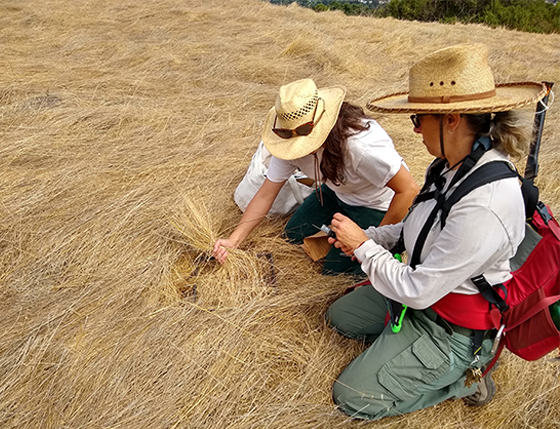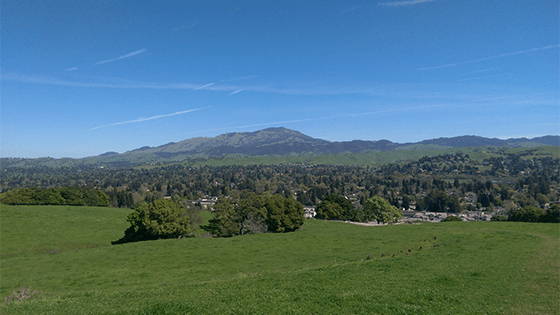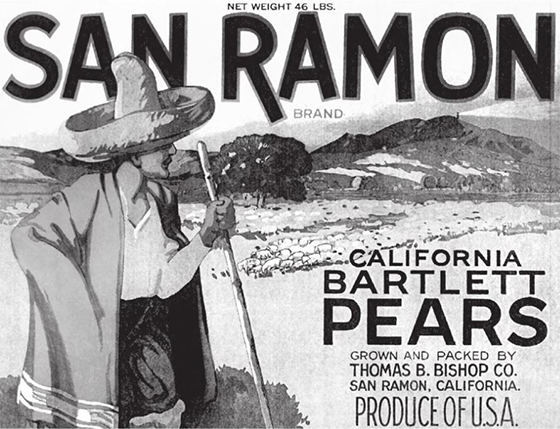Overview
LUPA Key Goals
- Open up landbank properties within the 756-acre project area.
- Provide 3 park access points, including a 25-car staging area along Bollinger Canyon Road and 2 walk-in entrances.
- Provides 4 miles of new multi-use trails.
- Connect San Ramon and Danville to Las Trampas.
- Close gaps in Calaveras Ridge Trail.
Site Description
The project is located in south-central Contra Costa County, on the western periphery of the San Ramon Valley within the City of San Ramon, Town of Danville, and unincorporated areas. The 756-acre project area consists of the former Peters Ranch, Chen, Elworthy, Podva properties and the Faria open space that will be coming to the Park District.
This project identifies opportunities to open up landbank properties for public access, close gaps along the Calaveras Ridge Regional Trail, and open up additional trails and access points to the public for hiking, bicycling, and equestrian activities. What is currently open for public access is a 12-car parking lot, a half-mile trail connection to Calaveras Ridge Trail, and a segment of the Calaveras Ridge Trail.



History
The project area is situated within a territory that was occupied by the Bay Miwok. The Bay Miwok were comprised of tribelets with lineages named for specific locations within the area they permanently occupied. The Tatcan tribelet lived in the project area in addition to Bollinger, Sycamore, and Green Valley Creeks, the western part of Mount Diablo and most of the Las Trampas Ridge.
The favorable environment of the project area, coupled with the abundance of natural resources, allowed the Bay Miwok peoples to be successful hunter/gatherers, and allowed them to establish village sites next to streams and creeks with seasonally occupied sites also located in the foothills of Mount Diablo. For the native people of east Contra Costa County, the mountain now called Mount Diablo, as well as the surrounding landscape, was sacred. Groups from distant places, such as the Sierra Nevada, revered the mountain as a place to pray and hold ceremonies, and the mountain figures prominently in several world creation myths.
The San Ramon Valley that includes present-day Town of Danville and San Ramon was used by Mission San Jose during the Spanish period (1772 to 1821) to graze sheep and cattle when the Spanish began to colonize the region and convert the Native population to Catholicism.
After Mexico gained independence from Spain in 1821, the San Ramon Valley was broken up into two large land grants, both called Rancho San Ramon.
In 1957, Bollinger Canyon Road (named after Joshua Bollinger who was the first European to settle in Bollinger Canyon) was paved by the U.S. Army to facilitate construction of the San Francisco Defense Area Site SF-25, a Nike surface-to-air guided missile system that operated from 1955 to 1959. The site was later used by the U.S. Air Force and then the California Army National Guard as a radio relay site until 1966.
Residential development was accelerated by the completion of Interstate 680 in 1965, and a severe drought in the 1970s, which put development pressure on local ranchers and farmers as grass and water for cattle diminished. As a result, many of the Valley’s ranches established in the nineteenth century were sold and developed into large subdivisions and business parks that encroached on the Valley’s walnut and pear orchards.

The Park District acquired the properties within the project area for natural resource protection and to provide recreation opportunities. Acquisition of the Peters Ranch property came in 1983 as a condition of a residential development project, as did the Elworthy property in 2015, and the Podva property in 2018. The Park District purchased the Chen property in 2007 to ensure protection of the open space from further development. The Park District expects to acquire the Faria property in 2023.
The Southern Las Trampas Land Use Plan Amendment will formally incorporate the landbank properties (Peters Ranch and Chen) and newly acquired properties (Elworthy, Podva, and Faria in 2023) into Las Trampas.
Video
Ranching on Peters Ranch in 1934 / California Pioneers of Santa Clara County
Annual round ups and brandings were an essential part of raising cattle within the project area. Footage of life on the former Peters Ranch property also depict the San Ramon Valley with walnut orchards before the transformation to residential development.
Timeline
2023The East Bay Regional Park District (Park District) has completed a Land Use Plan Amendment (LUPA) and Environmental Impact Report (EIR) for the southern portion of Las Trampas Wilderness Regional Preserve. On March 7, 2023, the Park District Board of Directors will hold a public hearing to consider certifying the EIR, adopting the Mitigation and Monitoring Program and Findings, and adopting the LUPA. The EIR addresses the potential physical, and environmental effects for each of the environmental topics outlined in the California Environmental Quality Act (CEQA) for the recommendations provided in the LUPA (Project). |
Project Resources
Project Materials
- February 2023: Las Trampas 2023 Project Location Map (PDF)
- February 2023: Final Land Use Plan Amendment with Appendix (PDF)
- October 2022: Draft Land Use Plan Amendment (PDF)
- October 2022: Notice of Availability (PDF)
- August 2019: Project Map (PDF)
- June 2017: Community Meeting Summary (PDF)
- June 2017: Community Meeting Presentation
California Environmental Quality Act
- February 2023: CEQA Findings (PDF)
- February 2023: Final EIR Response to Comments Documents (PDF)
- February 2023: Mitigation, Monitoring and Reporting Program (PDF)
- October 2022: Draft Environmental Impact Report (PDF)
- October 2022: Draft EIR Appendices (PDF)
- August 2019: Notice of Preparation and Initial Study (PDF)
Community Events and Public Hearings
- March 7, 2023: Board Meeting - Public Hearing
- November 28, 2022: Park Advisory Committee – Public Hearing
- November 10, 2022: Board Executive Committee
- September 23, 2019: Park Advisory Committee - Project Update [PDF]
- September 5, 2019: Board Executive Committee - Project Update [PDF]
- October 23, 2017: Park Advisory Committee - Project Introduction [PDF]
- June 7, 2017: Public Scoping Community Meeting (see Project Materials)
Contact
Please contact Kim Thai, Senior Planner, at kthai@ebparks.org, or at (510) 544-2320 to be added to the project mailing list.
